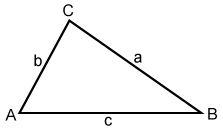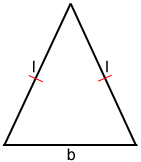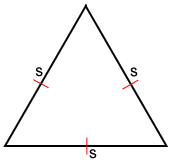Perimeter of a triangle
The perimeter of a triangle is the distance around it, which is the sum of the lengths of its sides. The formula for the perimeter of a triangle is:
Perimeter = a + b + c
where a, b, and c are the lengths of the three sides of the triangle.

Special triangles
Isosceles triangles, equilateral triangles, and right triangles have a number of relationships that allow us to find their perimeters without necessarily knowing all of their side lengths. Below are the formulas for the perimeters of these triangle types.
Isosceles triangle
Perimeter = 2 × l + b
Where l is the side length and b is the base length.

Equilateral triangle
Perimeter = 3 × s
Where s is the side length

Right triangle
You can use the Pythagorean Theorem to find the perimeter of a right triangle if you know, or can determine, the lengths of at least two sides from the given information.

Referencing the triangle above:
If a and b are given,
If a and c are given,
If b and c are given,
Example:
What is the perimeter of a triangle with a hypotenuse c = 26, and a side length a = 10?
| Perimeter = | |
| = | |
| = | 10 + 26 + 24 |
| = | 60 |
